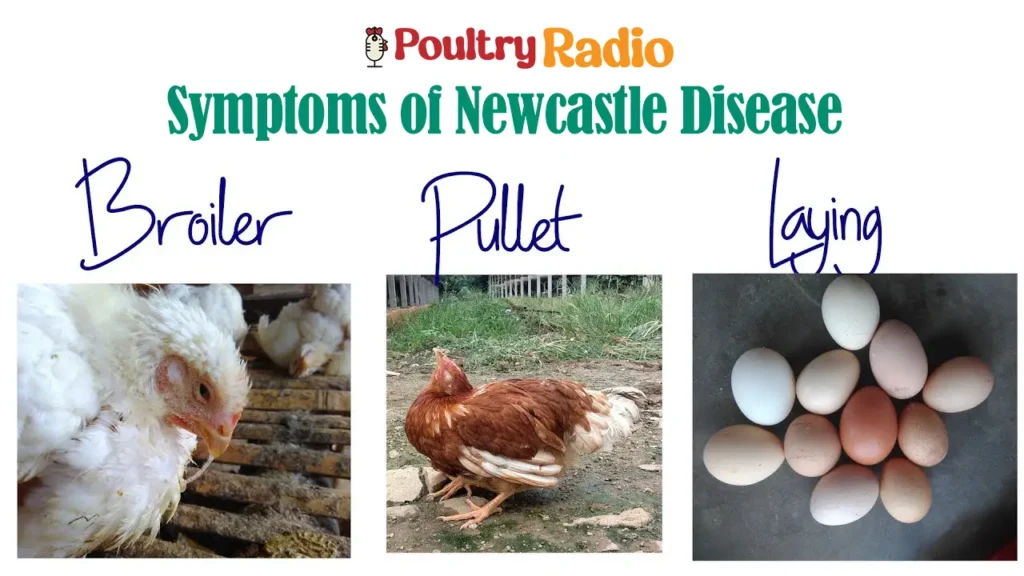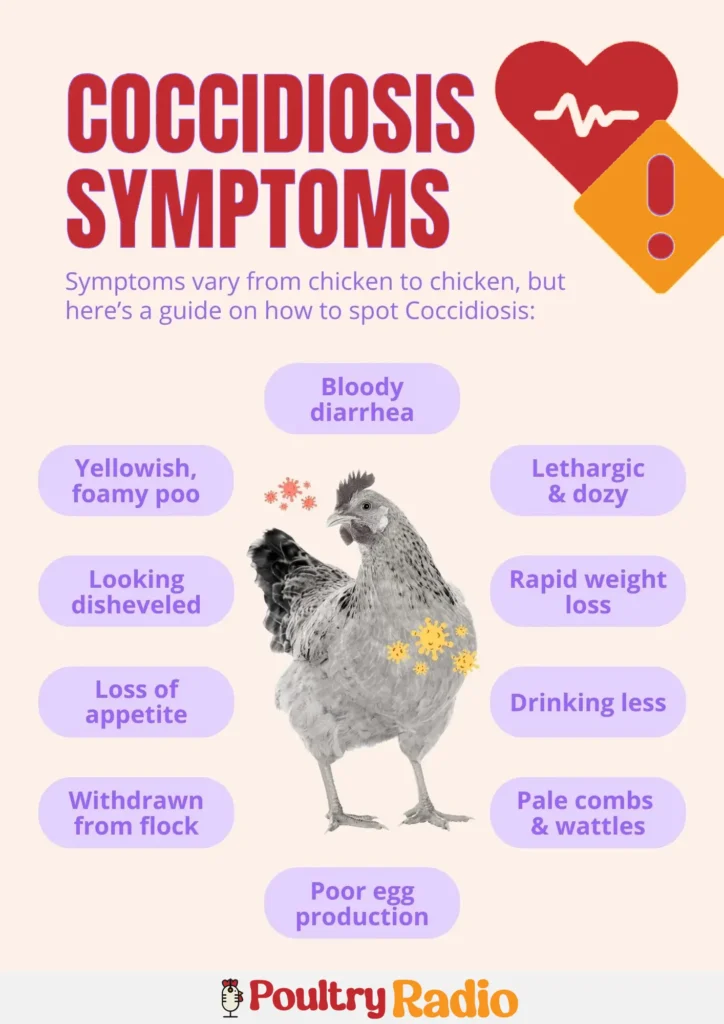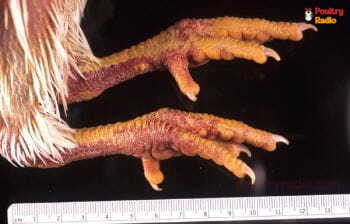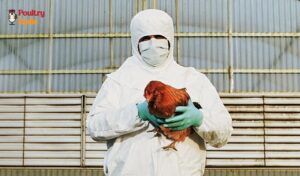Guarding Your Flock: 5 Common Chicken Diseases and Their Treatments
Common Chicken Diseases, do you want to know about them? In this article we’ll discuss common chicken illnesses and their treatments.
In the world of poultry farming, there’s an old saying:
“An ounce of prevention is worth a pound of cure.”
The health and well-being of your flock are the highest priority whether you raise them for their delicious eggs or delicate meat. Numerous bacterial, viral, and parasitic diseases can cause sickness in poultry. However, unlike dogs and cats, chickens are considered food animals, thus there are very few options for treatment available. For example, there are stringent rules on the use of antibiotics in chickens that are also thought to be crucial for human health to decrease antimicrobial resistance.
Because of this reality, tackling an infectious disease among chickens may be pretty challenging. As a result, the main goal should be to prevent the disease from spreading to your flock in the initial stages. You can reduce the risk of disease spreading inside the flock and lower the intensity and effects of any possible outbreak by sticking to basic disease prevention methods both before and after the introduction of additional flocks or birds.
Most Common Chicken Diseases:
- Newcastle Disease (ND)
- Coccidiosis (Cocci)
- Salmonellosis
- Avian Influenza (Bird Flu)
- Mycoplasmosis
1. Newcastle Disease (ND)
Newcastle Disease (ND), also known as avian paramyxovirus type 1 (APMV-1), is a highly contagious viral infection that primarily affects birds, especially poultry. It is caused by a member of the Paramyxoviridae family and has several strains with varying levels of severity. The disease is named after Newcastle upon Tyne in England, where it was first identified in 1926 during a severe outbreak among domestic poultry.
Newcastle Disease virus can infect a wide range of bird species, including chickens, turkeys, pigeons, ducks, and wild birds. The virus is transmitted through direct contact with infected birds, their bodily fluids, and contaminated surfaces. It can also spread indirectly through contaminated feed, water, and equipment, and even by airborne transmission over short distances.
What are the common Signs and Lesions of Newcastle Disease?
New Castle disease mainly affects the respiratory, digestive, and nervous systems of infected birds. Respiratory Signs are sneezing, coughing, and nasal discharge. When it affects the digestive system, diarrhea (greenish dropping), reduced feed intake, drop in egg production, and thin-shelled or misshapen eggs can be seen. Paralyzed legs and wings, and twisting of neck (torticollis) are the outcomes of nervous disorder.

During postmortem Inflammation of the trachea, conjunctiva, and sinuses is seen. Inflammation of the brain leads to paralysis, twisting of the neck (torticollis), and incoordination. Pinpoint hemorrhages on Proventriculus are pathognomonic of New Castle disease.
Prevention and Control of Newcastle Disease (ND):
A comprehensive approach consisting of biosecurity precautions, vaccinations, surveillance, and quick response to outbreaks is required to prevent and control Newcastle Disease (ND).
For more details click here.
2. Coccidiosis (Cocci)
Coccidiosis is a parasitic disease that can infect a variety of species, including poultry like chickens and turkeys. It is brought on by a family of microscopic organisms called coccidia, which is also referred to as Eimeria. The host animal’s intestinal lining is invaded by these single-celled parasites, causing varying degrees of intestinal damage and potential health problems.
Signs and Lesions of Cocci Chicken Disease:
Diarrhea that is either bloody or watery is one of the most obvious symptoms of coccidiosis. Mild to severe degrees of severity are possible. Dehydration from diarrhea can cause tiredness, decreased activity, and sunken eyes. Coccidiosis in birds may cause them to decrease feed intake, which would slow their growth rate.
The destruction of the intestinal lining is the defining feature of coccidiosis. Lesions can range in severity from minimal mucosal damage to moderate inflammation. The intestines may look swollen, ulcerated, and inflamed. Intestinal bleeding or hemorrhages might be seen, which contributes to the bloody diarrhea.

Prevention and Control Coccidiosis (Cocci) Disease:
To stop coccidia from entering the farm environment, strictly enforce biosecurity measures. This includes restricting access to the property for people, vehicles, and animals. Regularly clean and disinfect poultry housing and equipment, paying close attention to any potential breeding grounds for coccidia.
Do not overcrowd areas as this can lead to stress and the spread of coccidia. Limit your exposure to wet or humid environments because they may facilitate the growth of coccidia. A key preventive measure is vaccination. Commercial vaccinations are easily available to assist birds and build immunity against particular coccidia species.
For more details about coccidiosis in chickens click here.
3. What is Salmonellosis Chicken Disease?
Salmonellosis is a bacterial infection caused by various strains of salmonella bacteria. It can affect poultry including chicken and turkey. Due to its potential effects on bird health, food safety, and public health, it is a major concern in the poultry industry. There are numerous species, and each one has a different disease like Pullorum disease, Fowl typhoid and Paratyphoid
Clinical Signs and Lesions of Salmonellosis:
Infected birds may appear lethargic, with reduced activity levels and huddling together. Birds with salmonellosis often exhibit a decrease in feed intake and reduced interest in food. Diarrhea is a common symptom, resulting in loose or watery droppings. In some cases, respiratory signs such as coughing, sneezing, and nasal discharge may occur.
Salmonella infection often leads to inflammation of the intestines, with the mucosal lining becoming red and swollen. In severe cases, the intestinal lining can become necrotic (dead tissue), leading to ulcers and hemorrhages. The spleen, an organ that plays a role in immune function, may become enlarged due to the immune response to the infection. The liver might show signs of congestion, inflammation, and enlargement.
Prevention and Control of Salmonellosis:
Implement strict biosecurity measures to prevent the introduction and spread of Salmonella into the poultry environment. Regularly clean and disinfect poultry houses, equipment, and facilities to minimize bacterial contamination. Some countries have approved vaccines that can help reduce the prevalence of certain Salmonella strains in poultry. Regularly test for the presence of Salmonella in your flock through fecal sampling and other diagnostic methods.
If you want to read more about salmonellosis disease, click here.
4. What is Avian Influenza (Bird Flu) in Chickens?
Avian influenza, also referred to as bird flu, is a virus that mostly affects birds, especially domestic poultry and wild birds. It is extremely contagious. It is brought on by influenza type A viruses, which range in virulence from moderate to highly pathogenic strains that can result in serious sickness and significant mortality rates in flocks of chicken.


Based on their virulence, avian influenza viruses are divided into two main groups:
Low Pathogenic Avian Influenza (LPAI): This form of the virus generally causes mild symptoms or even goes unnoticed in infected birds.
Highly Pathogenic Avian Influenza (HPAI): HPAI viruses are much more virulent and can cause severe disease with high mortality rates in poultry.
Signs and Lesions of Bird Flu
Sudden death, respiratory signs (coughing, sneezing, nasal discharge), swelling of the head, neck, and eyes, lethargy, decreased activity, and diarrhea are a few common symptoms seen in the case of Avian Influenza.
In cases of HPAI outbreaks, infected birds might die rapidly, and mortality rates can be very high. Classical lesions of HPAI in chickens include cyanosis, edema of the head, edema of the feet, and blotchy red discoloration of the shanks
Prevention and Control of Avian Influenza in Chickens
To stop the introduction and spread of the virus on poultry farms, strict biosecurity measures must be put in place. Create a surveillance program to keep an eye out for avian influenza in chicken populations. Create and test a response strategy to handle epidemics quickly. This covers procedures for notifying authorities, testing diseased birds, and killing them. In some circumstances, vaccination can be the most effective defense against avian influenza. Vaccination plans must be thoroughly thought out and coordinated with veterinary specialists.
5. Mycoplasmosis
Mycoplasma disease in chickens, commonly referred to as mycoplasmosis, is a group of bacterial infections brought on by different Mycoplasma species. Due to the absence of a cell wall, these bacteria are distinct and resistant to many popular antibiotics which target cell walls. Poultry like chickens and turkeys, are highly susceptible to mycoplasma infections.

Various Mycoplasma species may infect poultry, but Mycoplasma gallisepticum (MG) and Mycoplasma synoviae (MS) are two of the most significant.
Mycoplasma gallisepticum (MG): MG primarily affects the respiratory system of poultry. It can cause chronic respiratory disease (CRD), characterized by sneezing, coughing, nasal discharge, and difficulty breathing.
Mycoplasma synoviae (MS): It can cause respiratory signs similar to CRD, as well as joint inflammation (synovitis) and eggshell abnormalities.
Signs and Lesions of Mycoplasmosis
The symptoms are similar to those seen with numerous other avian respiratory infections. Coughing, sneezing, rales, ocular and nasal discharge, and, occasionally, enlargement of the infraorbital sinus.
Swelling of the infraorbital sinuses may be the extent of lesions. On the other hand, sinusitis may not be present despite the presence of rhinitis, tracheitis, and airsacculitis as well as fibrinous pneumonia. Cheezies layer of fibrin on the liver can also be seen in a few cases.
Prevention and Control of Mycoplasmosis
Implement strict biosecurity measures to prevent the introduction and spread of mycoplasma infections. Regular testing for MG can play a key role in minimizing its spread. Vaccination against mycoplasma infections is available for certain strains and can help reduce the severity of symptoms and the spread of the disease.
You can find more explanatory article about Mycoplasmosis in Poultry.
Frequently Asked Questions
What are the most common diseases in chickens?
Globally, Highly Pathogenic Avian Influenza (HPAI) is often seen as the most important poultry disease due to the significant number of domestic poultry the virus kills every year. Unfortunately, we are currently facing a significant HPAI outbreak in North America in 2022.
How do you a Treat Chicken Disease?
1. Isolate the sick bird
2. Keep your sick chick hydrated
3. Encourage Healthy Eating
4. Focus on Rest and Healing
5. Plan for the Best and the Worst
6. Medication (by the consult of a veterinarian)
What Causes Green Stool in Chickens?
When chickens consume plenty of leafy greens and grass, they may develop green droppings. If you notice bright emerald green diarrhea, it could indicate Marek’s disease, Avian influenza, or Newcastle disease, although this is less likely. Make sure to seek advice from your vet for further assistance.
What Causes White Stool in Chickens?
Pullorum disease, which is caused by Salmonella Pullorum, leads to very high mortality in young chickens and turkeys. Affected birds tend to huddle near the heat source, exhibit loss of appetite, weakness, and depression, and may have white fecal material pasted to the vent area.








